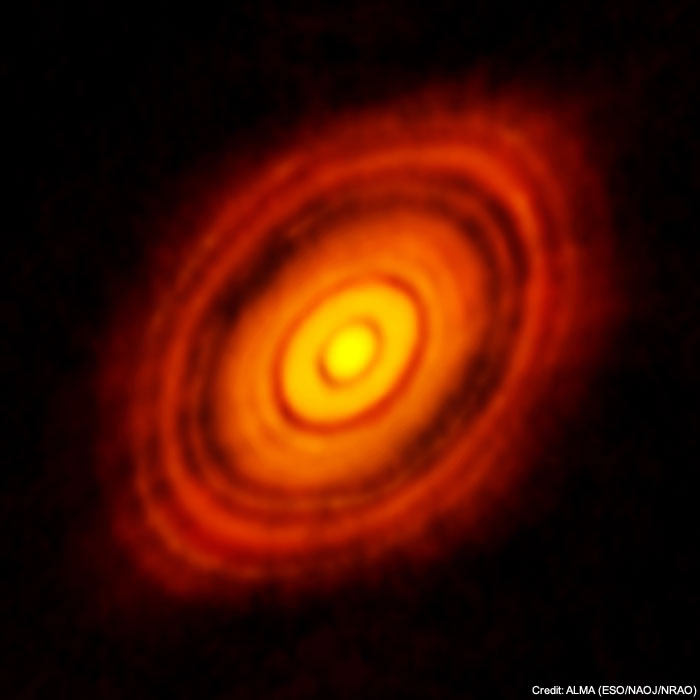Planet Formation Discovered with “2000 Vision”
Astrophotography・

| Date | October 2014 |
|---|---|
| Telescope | ALMA |
| Wavelength | 1.3 millimeter |
| Camera | ALMA Band 6 Receiver |
| Credit | ALMA (ESO/NAOJ/NRAO) |
Astrophotography・

| Date | October 2014 |
|---|---|
| Telescope | ALMA |
| Wavelength | 1.3 millimeter |
| Camera | ALMA Band 6 Receiver |
| Credit | ALMA (ESO/NAOJ/NRAO) |
The disk of dust around the young star HL Tauri was imaged with ALMA’s extremely high resolution known as “2000 Vision” (angular resolution of 0.035 arcsecond). The image clearly shows that the lanes of dust are enclosed between concentric circles. This is the first time that a site of planet formation has been photographed with this high of resolution. This image can be said to offer a glimpse of ALMA’s true capabilities.
Riddles Born from What can be Seen
It is thought that the gaps visible in the disk are the result of giant planets, similar to Jupiter, forming in the disk and sweeping away the dust. The possibility that giant planets are already forming at this very young stage, approximately 1 million years old, surprised many astronomers. It can be said that a new mystery was found through ALMA’s high observational capabilities.
In September 2014, ALMA implemented the Long Baseline Campaign, with antennas separated by up to 15 kilometers, confirming these observational techniques and capabilities. This image of HL Tau was obtained in these test observations. With the realization of very high resolution observations through the use of a long baseline, which has been the goal since the planning phase, research using ALMA has taken a large step forward.
For more details, please refer to the press release, “Revolutionary ALMA Image Reveals Planetary Genesis.”
Text by: Masaaki Hiramatsu (NAOJ Chile Observatory / Public Relations Center) Translation by: Ramsey Lundock (NAOJ)